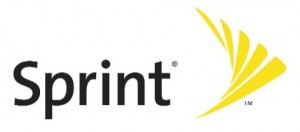I’ve been thinking about why Sprint has now decided to sell itself to Softbank.
It seems to me that one possible answer would be to blame Clearwire and then LightSquared.
Clearwire was to be Sprint’s first (but not last) 4G answer, but WiMax never took off. In fact, the only thing about Clearwire that took off were some of its major investors, like Google looking elsewhere to invest and actually make money on the investment.
Comes then Lightsquared, with its grand plan to deploy 4G services to various existing carriers using a very odd frequency band adjacent to the widely-relied upon GPS downlink band. Sprint loved its new 4G provider, especially since Lightsquared was to pay $9 billion-ish to Sprint to use the new Network Vision platform. While Lightsquared would be free sell its services through other carriers, it would be in a sense captive to Sprint since it would be a major network platform provider for Lightsquared’s services. It seems clear that Sprint’s Network Vision project moved forward, certainly in significant measure because of Lightsquared’s funding commitment.
Then came that nasty little GPS interference problem and sunk Lightquared, and resulted in a bankruptcy filing.
Sprint was left holding a $9 billion bag looking for another funding source for Network Vision. Before Softbank, no major replacements had stepped up. Sprint began shuttering Nextel sites as quickly as they could to reduce that ongoing lease load while pushing new Network Vision sites out into the field.
Not fast enough, apparently.
Now comes Softbank to offer up a huge capital infusion and other goodies for a 70% stake in Sprint. And, Softbank is eyeing Sprint’s nearly-kaput first 4G love, Clearwire. Word on the street is that Sprint, tracking Softbank’s longing eye, will try to take actual control of Clearwire, which was something denied it by the original investment agreement that kept Clearwire as a separate entity from Sprint. That would certainly make Sprint’s current love very, very happy.
One thing for sure: The T-Mobile+MetroPCS and Softbank+Sprint+Clearwire equations equal big trouble for the rapidly-disappearing smaller regional wireless carriers.
It would not surprise me to see virtually no regional carriers, and only four major wireless carriers in the U.S.: Verizon, AT&T, T-Metro, and SoftSprint. Following, I envision a T-Metro split-up shortly after it figures out that all it did was to replicate the dumb Sprint Nextel technically incompatible deal that started Sprint’s slide into the current Softbank sale.
Then there would be 3. Then you’ll hear the pin dropping on the table.



